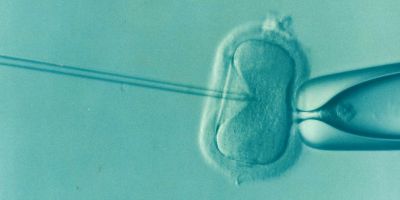Leeds researchers have identified new targets for drugs to treat lupus

Dr Elton Zeqiraj, Dr Francesco Del Galdo and colleagues have discovered a new regulator of the immune response which could be a new target for drugs to tackle autoimmune diseases.
The molecule that Target Identification in Lupus (TIL) grant recipient Dr Roger Greenberg of the University of Pennsylvania and his collaborators at the University of Leeds, Dr Elton Zeqiraj were studying contains two pieces-- SHMT2 and a cluster of proteins that interact with each other called BRISC. When these two pieces attach to each other, they trigger inflammation. If mice don't have BRISC, they are resistant to developing lupus in models tested by Dr. Greenberg and his team.
To better understand how BRISC and SHMT2 affect each other, Drs Greenberg and Zeqiraj used a technique called cryo-electron microscopy to take a high-resolution photo of the molecule. They found that four copies of BRISC combine to form a U-shaped structure that is strengthened by cross beams of SHMT2. Dr Greenberg and Dr Zeqiraj discovered that if they made small changes to the structure of BRISC, it can't pair up with SHMT2.
Patients with lupus often produce too much of the immune system molecules known as type I interferons, which drive lupus symptoms by making certain genes to work harder. The scientists found that if they stopped BRISC and SHMT2 from pairing up, most of those genes did not work as hard. That discovery suggests that a drug that would stop BRISC and SHMT2 from connecting may provide a new way to treat lupus symptoms.
"We want to find a drug targeting BRISC to decrease interferon and other inflammatory signals so we can help lupus patients," said Dr Greenberg. "Knowing the weakness in the BRISC-SHMT2 structure gives us new targets to work with."
Lupus Research Alliance President and CEO Kenneth M. Farbercommented, "Dr Greenberg's results are very exciting, pointing to potential targets for new drugs to be developed. We saw great potential in his TIL proposal and look forward to further progress in his work."
The scientists published their results this week in Nature.
Lupus is a chronic, complex autoimmune disease that affects millions of people worldwide. More than 90% of people with lupus are women; lupus most often strikes during the childbearing years of 15-45. African Americans, Latinx, Asians and Native Americans are two to three times at greater risk than Caucasians. In lupus, the immune system, which is designed to protect against infection, creates antibodies that can attack any part of the body including the kidneys, brain, heart, lungs, blood, skin, and joints.
About the Lupus Research Alliance
The Lupus Research Alliance aims to transform treatment while advancing toward a cure by funding the most innovative lupus research in the world. The organization's stringent peer review grant process fosters diverse scientific talent who are driving discovery toward better diagnostics, improved treatments and ultimately a cure for lupus. Because the Lupus Research Alliance's Board of Directors fund all administrative and fundraising costs, 100% of all donations goes to support lupus research programs.
SOURCE Lupus Research Alliance




